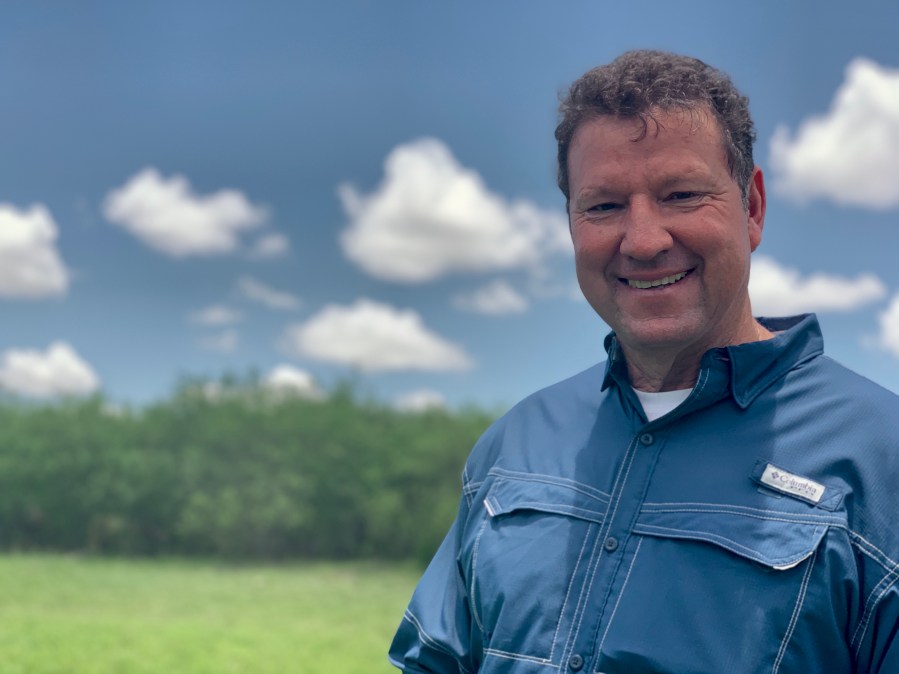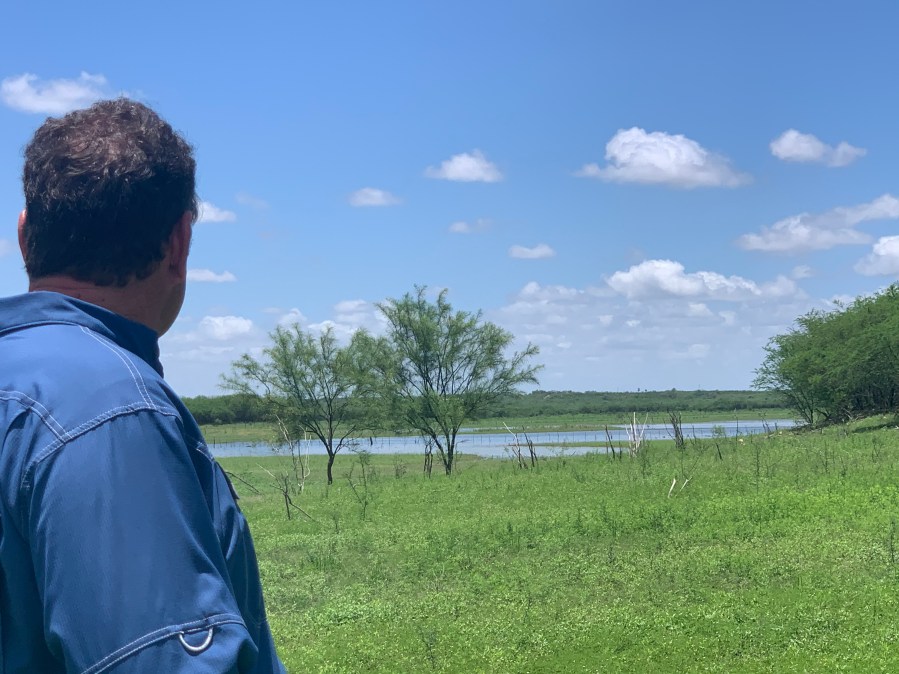ZAPATA COUNTY, Texas (Border Report) — Leaders of a small, rural county in South Texas say they are holding firm and refusing to allow government border-wall surveyors onto a popular bird-watching strip of land owned by the county.
Zapata County Judge Joe Rathmell on Tuesday told Border Report that the county’s attorney late Monday sent a letter to Homeland Security officials informing them of their decision to forbid border wall surveyors onto their acre of land in San Ygnacio, home to a popular bird and butterfly sanctuary along the Rio Grande about 40 miles south of Laredo, Texas.
Rathmell added that the county is prepared to fight the action in federal court to protect the right of bird-watchers who come to this area to seek out the elusive white-collared seedeater, a bird most commonly found in Mexico.

“It is a critical habitat area for the white-collared seedeater, a bird that attracts many tourists and visitors and bird watchers to the area and it’s a sensitive area and we felt that area should not be disturbed and we’re afraid that any activity there would certainly bring harm to the bird and its sanctuary there. And, so, yes we did deny access to that property,” Rathmell said. “The white-collared seedeater is one of the bucket-list birds.”
This was the second time that the five-member Zapata County Commissioners Court, in this ranching and farming community of just 14,000, has rejected federal surveyors. On Feb. 24, commissioners first voted unanimously to deny the
“We have received a second notice for (right of entry) and our commissioners’ court voted to deny it again and so I’m sure we’ll be in litigation soon for access to that property, but we feel strongly about the sensitivity of that area to the habitat and we don’t want it disturbed,” Rathmell said.
On March 25, 2019, Rathmell led this commissioners’ court to also pass a resolution denouncing the Trump administration’s plans to build a border wall through South Texas, stating it “would further endanger the Rio Grande,” which “has been the lifeblood of the County of Zapata since its founding in 1858.”
These wide-open spaces where the blazing sun Tuesday is expected to bring temperatures to 100 degrees, is not for the faint of heart. Ranchers here are a hardy and proud bunch and most families date back several generations. And they have endured many setbacks in this hardscrabble remote area.
In the early 1950s, all of the land alongside the Rio Grande was condemned by the government in order to build Falcon Dam and Falcon Lake. The lake swallowed up the original cities of Zapata, Lopeño,
Residents managed, however, to convince federal officials not to disturb San Ygnacio, which sits higher up. This popular birding and ranching spot took root, and Rathmell says it is too dear to their hearts to see it destroyed by a border wall.

An imposing 6-foot-tall figure, Rathmell is soft-spoken and jokes easily. He coos to call his cattle who come willingly toward him when they see him. But it’s clear that he’s not one to be pushed around.
Just recently, his family, along with nearly 200 other ranchers, were told by the International Boundary and Water Commission that their 70-year leasing rights to seasonally graze cattle had been rescinded and they must remove their herds by the end of the month. These rights were given to families in the early 1950s when the government took the land for the dam and lake.
Rathmell and U.S. Rep. Henry Cuellar told Border Report late Friday that they are working with the IBWC
Read an exclusive Border Report story on these grazing rights being rescinded.
“Generations after generations of family ranchers have kept onto their land. And, yes, that’s the truth,” Rathmell said recently as he surveyed a field where 100 of his family’s cattle graze along the banks of the Rio Grande.
This tranquil and quiet county, with no incorporated towns and where everyone knows everyone else, draws thousands of birders each year, many hoping to sneak a peek at the elusive white-collared seedeater.
Jim Chapman, president of the Friends of the Wildlife Corridor, a nonprofit support group for the Santa Ana National Wildlife Refuge and Lower Rio Grande Valley National Wildlife Refuge, says although it is not an endangered or threatened bird, it is rare in North America and found mostly in Mexico, so it is a coveted find among birders in South Texas.
“It’s one of those birds that occurs south of us and barely comes into Texas and that’s why it’s such a sought after bird,” Chapman said.
















